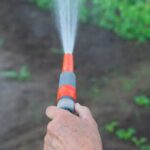As the winter season approaches, many gardeners may find themselves wondering how to continue their passion for gardening during the colder months. This is where greenhouse gardening comes in, offering a solution for growing and enjoying winter vegetables even when outdoor conditions are not favorable. Greenhouse gardening in winter allows for the cultivation of a wide variety of vegetables despite the cold weather, providing an opportunity to maintain a constant supply of fresh produce.
Greenhouse gardening offers numerous benefits for those looking to grow winter vegetables. From providing protection against harsh weather conditions to creating a controlled environment for optimal plant growth, greenhouses offer a valuable resource for gardeners seeking to extend their growing season. With the right strategies and techniques, it is possible to create a thriving winter vegetable garden within the confines of a greenhouse.
When it comes to choosing the right winter vegetables for your greenhouse, there are several factors to consider, including climate compatibility, space availability, and personal preferences. By carefully selecting suitable vegetable varieties and planning ahead, gardeners can maximize their greenhouse space and ensure a successful winter harvest. In this article, we will explore the various aspects of greenhouse gardening in winter and provide valuable insights into selecting, planting, and caring for winter vegetables within a greenhouse setting.
Benefits of Greenhouse Gardening for Winter Vegetables
When it comes to growing vegetables in the winter, a greenhouse can be a game-changer. The benefits of greenhouse gardening for winter vegetables are numerous and can make a significant difference in the success of your crops. The controlled environment of a greenhouse allows you to extend the growing season, protect your plants from harsh weather conditions, and have more control over temperature and humidity levels.
One of the main benefits of greenhouse gardening for winter vegetables is the ability to grow a wider variety of crops throughout the year. While outdoor gardens may be limited to hardy vegetables that can withstand the cold, a greenhouse provides a warm and sheltered environment for more delicate crops. This means you can enjoy fresh produce like tomatoes, peppers, and cucumbers even during the winter months.
In addition to extending the growing season and expanding your crop options, greenhouse gardening for winter vegetables also offers better protection against pests and diseases. With proper maintenance and care, you can create an environment that is less hospitable to common garden pests. This can result in healthier plants and higher yields compared to outdoor gardening during the colder months.
| Benefits | Description |
|---|---|
| Extended Growing Season | A greenhouse allows for longer periods of plant growth, even during winter. |
| Greater Crop Variety | A wider range of vegetable options can be grown in a greenhouse during winter. |
| Pest and Disease Protection | The controlled environment of a greenhouse reduces the risk of infestations and infections in plants. |
Choosing the Right Winter Vegetables for Your Greenhouse
Winter is a great time to grow vegetables in a greenhouse, as it protects them from the harsh weather and provides a warm and stable environment for their growth. When choosing the right winter vegetables for your greenhouse, it’s important to consider which plants thrive in cooler temperatures and lower light levels. Some excellent options for winter greenhouse gardening include kale, spinach, lettuce, radishes, carrots, and broccoli.
Kale is a hardy green that can withstand cold temperatures and still thrive. It’s packed with nutrients and can be used in a variety of dishes. Spinach is another great choice for winter greenhouse gardening, as it prefers cooler weather and doesn’t do well in hot temperatures. Lettuce varieties like butterhead and romaine also grow well in a greenhouse during the winter months.
Root vegetables like radishes, carrots, and beets are also ideal for winter greenhouse gardening. They prefer cooler temperatures and can be grown successfully in the protected environment of a greenhouse. Broccoli is another cold-hardy vegetable that does well in a greenhouse during the winter. It requires consistent moisture and protection from frost, making it an excellent choice for winter greenhouse gardening.
Growing these winter vegetables in a greenhouse allows you to extend your growing season and enjoy fresh produce even during the colder months. With the right care and attention to temperature and light levels, you can have a successful harvest of delicious winter vegetables from your greenhouse.
| Winter Vegetables | Best Growing Conditions |
|---|---|
| Kale | Cold temperatures, stable environment |
| Spinach | Cooler weather, lower light levels |
| Lettuce (butterhead/romaine) | Thrives in cooler temperatures |
Preparing Your Greenhouse for Winter Vegetables
When it comes to preparing your greenhouse for winter vegetables, there are several important steps to take in order to ensure a successful growing season. The first step is to thoroughly clean and disinfect the inside of your greenhouse.
This will help to prevent any pests or diseases from taking hold and causing damage to your winter vegetable crops. It’s also important to check for any cracks or gaps in the structure of the greenhouse that could let cold air in, and seal them accordingly.
Once your greenhouse is clean and secure, you’ll need to think about how you’re going to regulate the temperature inside. Installing a heater can be a great way to keep your winter vegetables at just the right temperature, especially during particularly cold nights. Additionally, consider using thermal screens or bubble wrap insulation to help retain heat within the greenhouse.
Next, it’s important to think about lighting for your winter vegetable crops. While natural sunlight is best, during the darker days of winter it may be necessary to supplement with artificial lighting. LED grow lights are a popular choice for greenhouse gardeners, as they provide the specific spectrum of light that plants need for healthy growth.
In summary, preparing your greenhouse for winter vegetables involves cleaning and securing the structure, regulating temperature with heating and insulation, and providing appropriate lighting. By taking these steps, you can create an optimal environment for growing a wide variety of delicious winter vegetables in your greenhouse.
Planting and Care Tips for Winter Vegetables in a Greenhouse
Choosing the Right Winter Vegetables
When it comes to planting winter vegetables in your greenhouse, it is essential to choose the right ones that thrive in cooler temperatures. Some great options for winter vegetables include kale, spinach, lettuce, carrots, radishes, and broccoli. These cold-hardy plants can withstand the lower temperatures inside the greenhouse during the winter months and still produce a bountiful harvest.
Optimal Planting Times
Proper timing is crucial when planting winter vegetables in a greenhouse. It is important to consider the specific climate and temperature conditions in your area when determining the optimal planting times for each type of vegetable. Be sure to plant your winter vegetables early enough so they have time to mature before the coldest part of winter sets in. Additionally, spacing out your plantings over several weeks can help ensure a continuous harvest throughout the winter season.
Care Tips for Winter Vegetable Plants
In order to successfully grow winter vegetables in a greenhouse, it is important to provide the right care and attention to your plants. During the colder months, it is crucial to monitor and maintain proper temperature levels within the greenhouse. Using row covers or frost cloth can also help protect delicate plants from extreme cold. Additionally, regular watering and fertilizing are important for ensuring that your winter vegetables continue to thrive despite the challenging conditions.
By choosing suitable crops, planting at the right times, and providing proper care and maintenance, you can enjoy a productive greenhouse garden even during the coldest months of the year.
Common Pests and Diseases to Watch for in Winter Greenhouse Gardening
When it comes to greenhouse gardening in the winter, it’s important to be proactive in preventing and managing pests and diseases. The controlled environment of a greenhouse can create ideal conditions for various pests and diseases to thrive, so being vigilant is crucial for a successful winter vegetable harvest.
One common pest to watch out for in winter greenhouse gardening is the whitefly. These tiny insects can infest a greenhouse quickly and cause damage to your winter vegetables. Regular monitoring and the use of sticky traps can help to control their population. Additionally, aphids, spider mites, and caterpillars are also common pests that can affect winter vegetables in a greenhouse.
In terms of diseases, powdery mildew and botrytis are two common issues that greenhouse gardeners may encounter when growing winter vegetables. Proper ventilation and air circulation can help prevent these diseases from taking hold in your greenhouse. It’s also important to practice good sanitation by removing any diseased plant material promptly.
To effectively manage pests and diseases in winter greenhouse gardening, consider using natural predators or organic pesticides as part of an integrated pest management approach. By staying attentive to potential issues and taking proactive measures, you can ensure that your winter vegetables thrive in your greenhouse throughout the season.
Harvesting and Storing Winter Vegetables From Your Greenhouse
When it comes to greenhouse gardening in the winter, the payoff comes when it’s time to harvest and store your homegrown vegetables. With the right care and attention, you can enjoy a bountiful harvest even during the coldest months of the year. Here are some tips for harvesting and storing winter vegetables from your greenhouse:
- Harvesting: When it comes to harvesting winter vegetables from your greenhouse, timing is key. Most winter vegetables can tolerate colder temperatures, but they should still be harvested before the frost sets in. Use a sharp knife or pruners to carefully cut the vegetables from the plant, being careful not to damage the plant itself.
- Storing: After harvesting your winter vegetables, it’s important to store them properly to ensure they stay fresh for as long as possible. Root vegetables like carrots and potatoes can be stored in a cool, dark place with good ventilation. Leafy greens can be placed in plastic bags with holes punched in them to allow for airflow before storing them in the refrigerator.
Properly storing your harvest will allow you to enjoy your homegrown winter vegetables well into the spring months.
Overall, harvesting and storing winter vegetables from your greenhouse can be a satisfying experience. It allows you to enjoy fresh produce even during the coldest months of the year and gives you a sense of accomplishment knowing that you were able to successfully grow and preserve your own food. With proper planning and care, greenhouse gardening can provide a continuous supply of fresh, nutritious vegetables all year round.
Whether you are an experienced gardener or just starting out with greenhouse gardening in winter, following these tips will help you make the most of your efforts and keep delicious and healthy produce on hand throughout the season.
Success Stories and Tips From Experienced Winter Greenhouse Gardeners
Learning From Experienced Gardeners
One of the best ways to improve your greenhouse gardening skills is by learning from experienced gardeners who have successfully grown winter vegetables in their greenhouses. Whether it’s through online forums, local gardening clubs, or workshops, tapping into the knowledge and experience of others can provide valuable insights and tips for your own greenhouse gardening journey. Many experienced gardeners are more than willing to share their success stories and offer helpful advice to newcomers.
Tips for Maximizing Your Greenhouse Space
One common challenge for winter greenhouse gardening is maximizing space, especially when growing a variety of vegetables. Experienced gardeners often have creative solutions for making the most of limited space, such as using vertical gardening techniques or implementing efficient spacing strategies. Learning how to effectively organize and utilize your greenhouse space can lead to higher yields and a greater variety of winter vegetables.
Overcoming Common Challenges
Experienced winter greenhouse gardeners have likely encountered a variety of challenges throughout their gardening journeys, from pest infestations to unexpected weather conditions. By hearing about their experiences and how they overcame these challenges, you can better prepare yourself for potential obstacles that may arise in your own greenhouse. Additionally, learning about their preferred methods for pest control, disease prevention, and temperature management can help you proactively address these issues in your own winter greenhouse gardening endeavors.
Conclusion
In conclusion, greenhouse gardening in winter offers a multitude of benefits and rewards for those willing to put in the effort. By providing a controlled environment, gardeners can continue to grow fresh, nutritious vegetables even during the coldest months. The ability to extend the growing season and protect delicate plants from harsh weather conditions is invaluable for those who are passionate about gardening.
Choosing the right winter vegetables for your greenhouse is crucial for success. Some popular options include kale, spinach, carrots, and broccoli, all of which thrive in cooler temperatures. With proper planning and preparation, your greenhouse can yield a bountiful harvest throughout the winter months, providing you with an abundance of delicious and healthy produce to enjoy.
Experienced winter greenhouse gardeners have shown that with dedication and attention to detail, it is indeed possible to achieve thriving crops even in the harshest of conditions. From effective pest control to optimal planting schedules, there are countless tips and tricks that can make a significant difference in the success of your winter greenhouse gardening endeavors.
Embracing the joy of greenhouse gardening in winter is not without its challenges, but it undoubtedly brings great satisfaction and rewards to those who are willing to take on the task.
Frequently Asked Questions
Can I Grow Vegetables in Greenhouse in Winter?
Yes, you can grow vegetables in a greenhouse in winter. Greenhouses provide a controlled environment that allows for the growth of vegetables even during the colder months. With proper insulation and heating, it is possible to cultivate a variety of vegetables during winter.
Can You Grow All Vegetables Year Round in a Greenhouse?
While greenhouses do provide an extended growing season, it may not be feasible to grow all vegetables year-round. Some vegetables thrive better in different seasons and may require specific conditions that are hard to replicate within a greenhouse. However, many vegetables can indeed be grown throughout the year with the right setup and care.
Can You Grow Peppers in a Greenhouse During Winter?
Yes, peppers can be grown in a greenhouse during winter. Peppers are sensitive to cold temperatures, making a greenhouse an ideal environment for their cultivation during the winter months. With adequate warmth and light, peppers can be successfully grown in a greenhouse throughout winter.

If you’re looking to get into vegetable gardening, or are just looking for some tips on how to make your current garden better, then you’ve come to the right place! My name is Ethel and I have been gardening for years. In this blog, I’m going to share with you some of my best tips on how to create a successful vegetable garden.





